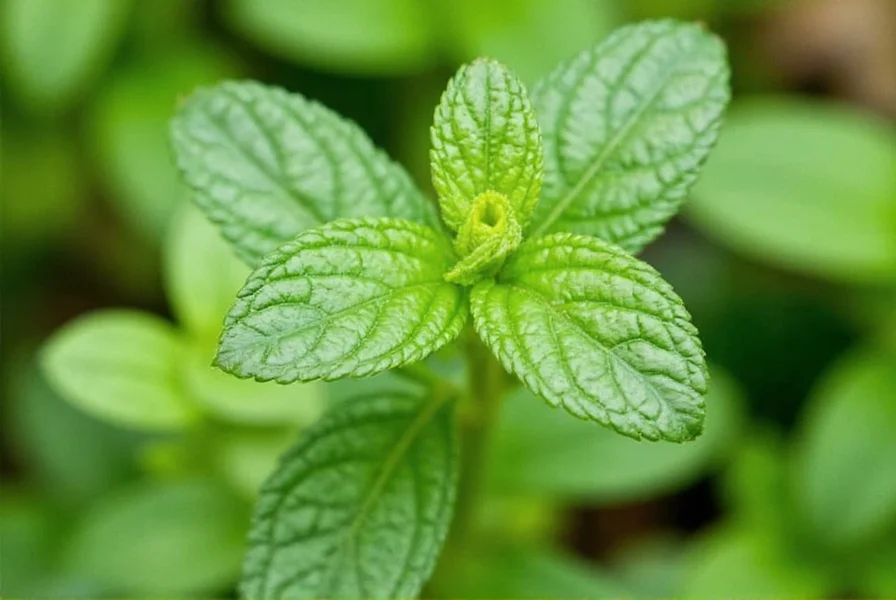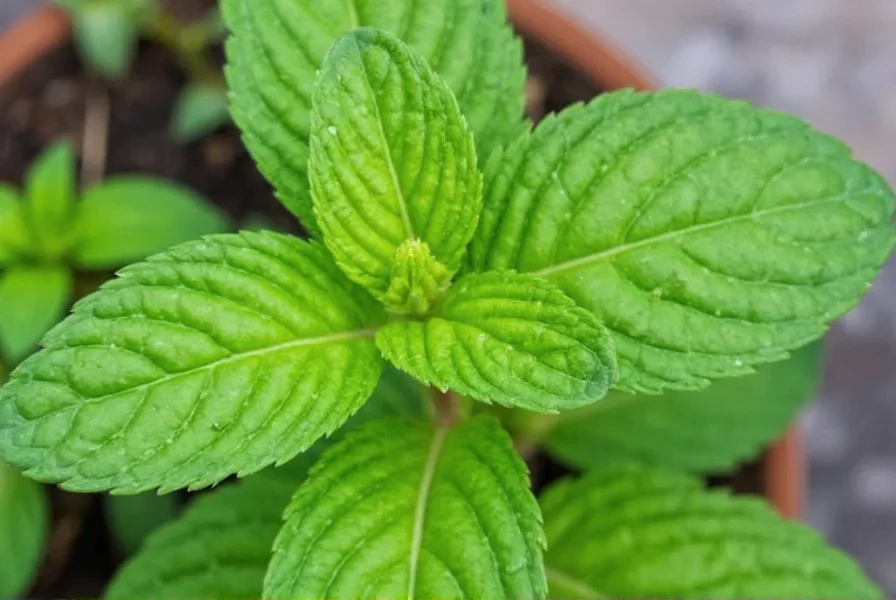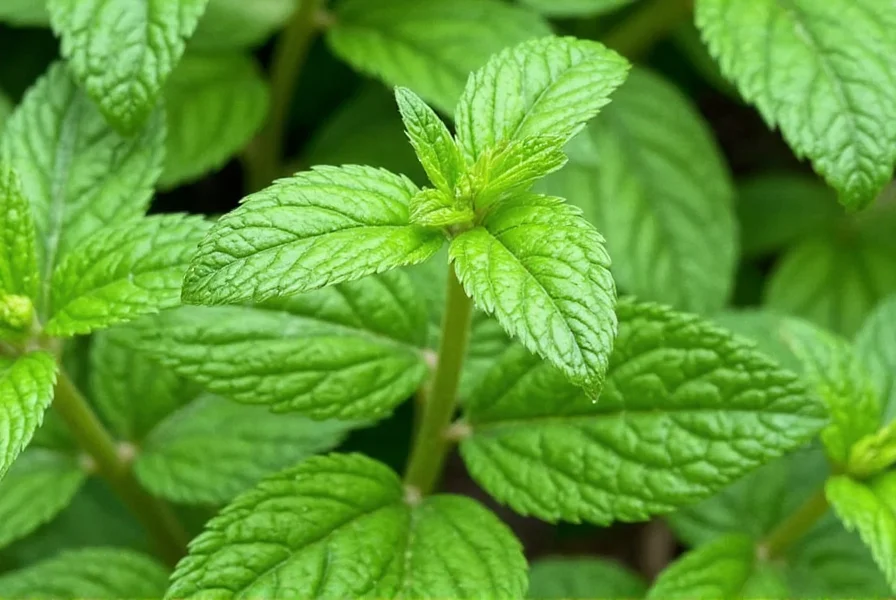Ginger mint (Mentha × gracilis), also known as Scotch spearmint or variegated mint, is a natural hybrid between spearmint (Mentha spicata) and corn mint (Mentha arvensis) that features a distinctive spicy, ginger-like aroma despite containing no actual ginger compounds. This perennial herb grows best in moist, partially shaded environments and offers unique culinary applications due to its complex flavor profile combining traditional mint freshness with warm, spicy notes.
Unlike common misconceptions, ginger mint isn't related to true ginger (Zingiber officinale) but earned its name from the subtle spicy warmth in its flavor profile. This versatile herb belongs to the Lamiaceae family and shares the square stems and opposite leaves characteristic of all mint varieties. Understanding ginger mint's unique properties helps gardeners and culinary enthusiasts maximize its potential in both garden and kitchen settings.
Botanical Characteristics of Ginger Mint
Ginger mint distinguishes itself through several identifying features that set it apart from other mint varieties. The plant typically reaches 12-24 inches in height with spreading growth habits common to most mints. Its leaves display a distinctive crinkled texture with serrated edges and often feature variegated coloring—light green with creamy white or yellow margins—particularly in the popular 'Variegata' cultivar.
The most notable characteristic is its aroma and flavor profile. When crushed, ginger mint releases volatile compounds including carvone and menthol, but with higher concentrations of certain terpenes that create that signature spicy warmth reminiscent of ginger. This unique chemical composition makes ginger mint particularly valuable for specific culinary applications where a more complex mint flavor is desired.

Growing Ginger Mint: Cultivation Requirements
Ginger mint thrives in USDA hardiness zones 5-9 and prefers partial shade, though it tolerates full sun in cooler climates. Unlike many mint varieties that demand full sun, ginger mint appreciates some protection from intense afternoon sunlight, which can cause leaf scorch. The ideal soil pH ranges from 6.0 to 7.5, with consistent moisture being critical for optimal growth.
Due to its vigorous spreading nature through underground rhizomes, container gardening represents the most practical approach for most home growers. When planting directly in garden beds, install root barriers at least 18 inches deep to prevent unwanted spread. Regular harvesting encourages bushier growth and prevents the plant from becoming leggy. For best results when growing ginger mint, maintain consistent soil moisture without waterlogging and provide monthly feedings with balanced organic fertilizer during the growing season.
| Growing Condition | Optimal Requirement | Notes |
|---|---|---|
| Sun Exposure | Partial shade (3-6 hours) | Tolerates full sun in cooler climates with adequate moisture |
| Soil Type | Moist, well-draining loam | Add compost for improved fertility and moisture retention |
| Water Needs | Consistent moisture | Water when top inch of soil feels dry; avoid waterlogging |
| Propagation | Stem cuttings or division | Spring or early fall best for establishment |
Culinary Applications of Ginger Mint
The distinctive flavor profile of ginger mint makes it particularly valuable in specific culinary contexts where standard mint varieties might prove too one-dimensional. Its spicy warmth complements both sweet and savory dishes, offering complexity that regular spearmint or peppermint cannot provide.
Chefs specializing in fusion cuisine frequently use ginger mint to bridge flavor profiles between Asian and Western dishes. The herb works exceptionally well in fruit salads featuring mango, peach, or pineapple, where its ginger-like notes enhance the tropical flavors. For beverage applications, ginger mint creates a naturally spicy iced tea without requiring actual ginger root, making it ideal for those seeking gentler digestive benefits.
When preparing ginger mint for culinary use, harvest leaves in the morning after dew has dried but before the heat of the day. Use fresh leaves within 2-3 days for optimal flavor, or preserve through freezing in ice cube trays with water or oil. The 'Variegata' cultivar offers not only flavor benefits but visual appeal as a garnish due to its striking leaf variegation.
Ginger Mint in Traditional Medicine
While scientific research specifically on ginger mint remains limited compared to more widely studied mint varieties, traditional herbal medicine systems have incorporated this herb for various digestive and respiratory applications. The combination of menthol and unique terpenes in ginger mint creates a synergistic effect that may offer benefits beyond standard mint varieties.
Traditional preparations often involve steeping fresh ginger mint leaves in hot water to create a tea consumed after meals to support digestion. The herb's aromatic compounds may help relax gastrointestinal muscles while promoting bile flow. Unlike true ginger, ginger mint generally causes less gastric irritation, making it suitable for individuals with sensitive stomachs seeking digestive support.
It's important to note that while ginger mint shows promise in traditional applications, it shouldn't replace medical treatment for serious conditions. Those with gastroesophageal reflux disease (GERD) should consult healthcare providers before regular consumption, as mint varieties can sometimes relax the lower esophageal sphincter.
Comparing Ginger Mint with Other Mint Varieties
Understanding how ginger mint differs from other common mint varieties helps determine when to choose it over alternatives. While all mints share certain chemical compounds, the specific ratios create dramatically different flavor experiences.
Compared to spearmint (Mentha spicata), ginger mint offers a more complex profile with noticeable warmth and spiciness rather than the straightforward sweet mintiness of spearmint. Against peppermint (Mentha × piperita), ginger mint provides less intense menthol cooling but greater aromatic complexity. Apple mint (Mentha suaveolens) delivers fruitier notes without the spicy dimension that defines ginger mint.
For gardeners deciding between mint varieties, ginger mint's partial shade tolerance gives it an advantage in gardens with limited full sun exposure. Its variegated varieties also provide visual interest that solid green mints cannot match. When planning a culinary herb garden, consider including ginger mint alongside standard varieties to expand your flavor palette for cooking and beverage preparation.

Harvesting and Preserving Ginger Mint
Proper harvesting techniques maximize both plant health and flavor quality. The optimal time for harvesting ginger mint is just before flowering when essential oil concentrations peak. Morning harvests after dew has dried but before midday heat preserves the most volatile aromatic compounds.
When cutting stems, always leave at least two sets of leaves on the plant to ensure continued growth. Harvest no more than one-third of the plant at any single time to avoid stressing the mint. For immediate use, rinse leaves gently in cool water and pat dry with clean towels before incorporating into recipes.
For longer preservation, several effective methods exist. Freezing whole leaves in ice cube trays with water maintains flavor for up to six months. Creating mint-infused oils or vinegars captures the essence for culinary applications. While drying ginger mint is possible, the process diminishes its distinctive spicy notes more than other mint varieties, making fresh or frozen preparations preferable for experiencing its unique characteristics.
Frequently Asked Questions About Ginger Mint
Is ginger mint the same as regular mint?
No, ginger mint (Mentha × gracilis) is a specific hybrid mint variety with distinctive spicy, ginger-like notes in its flavor profile. While it shares the square stems and opposite leaves common to all mint varieties, its unique terpene composition creates a more complex flavor than standard spearmint or peppermint.
Can I substitute ginger mint for regular mint in recipes?
Yes, but with flavor considerations. Ginger mint works well as a substitute when you want to add complexity and subtle warmth to dishes. In recipes calling for mint where a spicy dimension would complement other ingredients (like fruit salads or certain Middle Eastern dishes), ginger mint can enhance the flavor profile. However, for recipes relying on pure mint flavor without spice notes, standard spearmint may be preferable.
Does ginger mint actually contain ginger?
No, ginger mint contains no actual ginger (Zingiber officinale) compounds. The name refers to the spicy, warm notes in its flavor profile that reminiscent of ginger, created by specific terpenes in the plant's essential oils. Despite the name, ginger mint and true ginger belong to completely different plant families with no botanical relationship.
How do I prevent ginger mint from taking over my garden?
The most effective method for controlling ginger mint's spread is container gardening. Plant it in pots with drainage holes, either above ground or partially buried in soil. If planting directly in garden beds, install root barriers at least 18 inches deep around the planting area. Regular harvesting helps manage growth, and dividing plants every 2-3 years prevents overcrowding while providing new plants.
What makes ginger mint different from ginger-flavored mint products?
True ginger mint is a specific plant variety (Mentha × gracilis) with naturally occurring spicy notes. Ginger-flavored mint products typically combine regular mint with actual ginger root or artificial flavorings. The natural complexity of ginger mint cannot be perfectly replicated by simply mixing standard mint with ginger, as the plant produces unique compounds through its specific genetic makeup.











 浙公网安备
33010002000092号
浙公网安备
33010002000092号 浙B2-20120091-4
浙B2-20120091-4